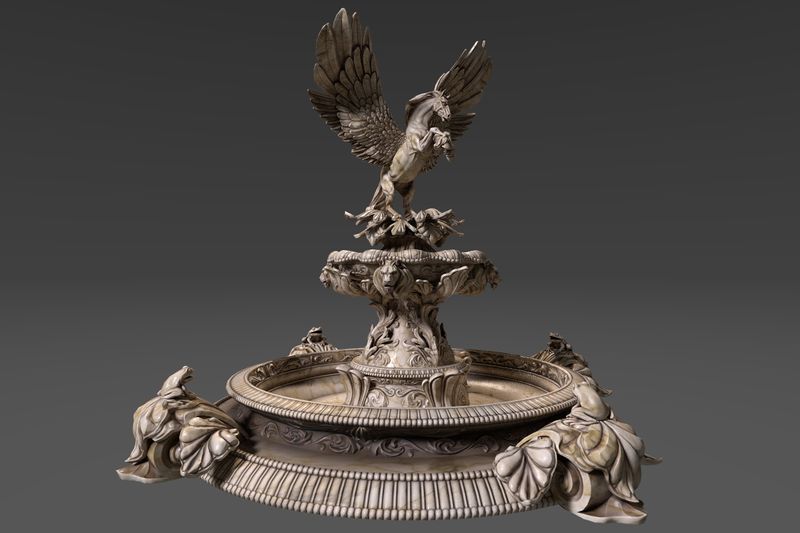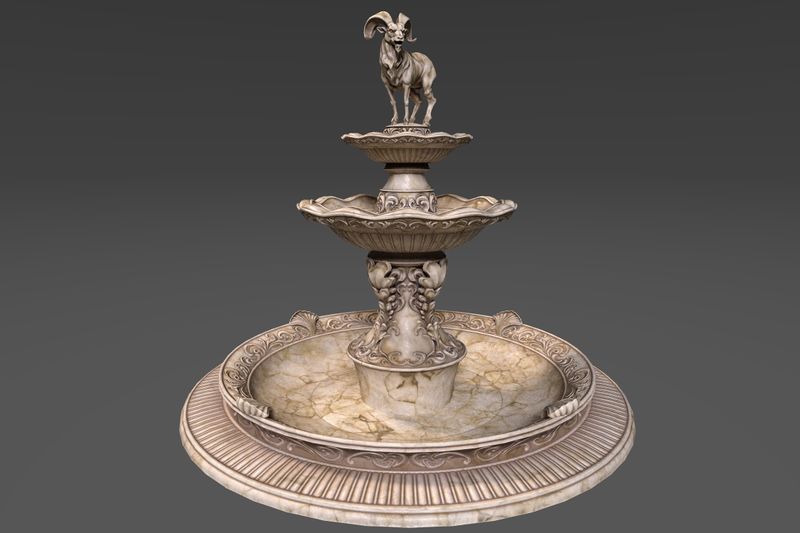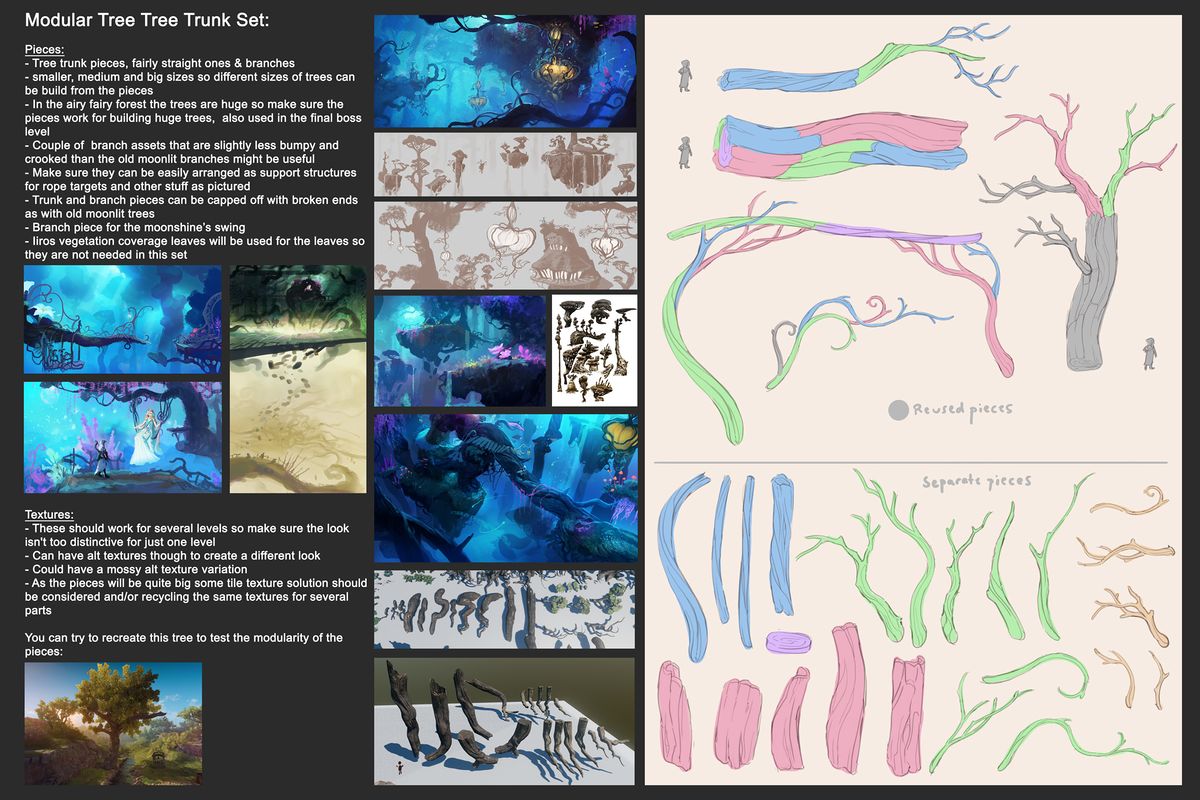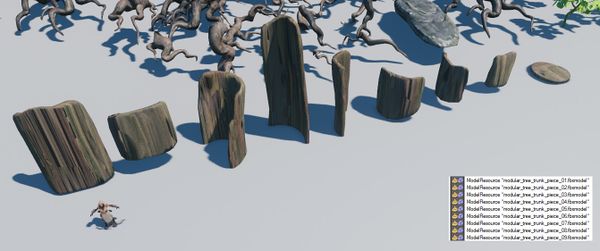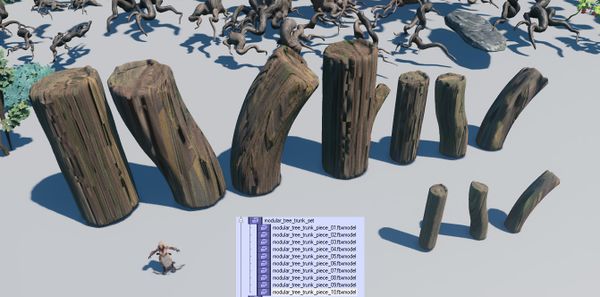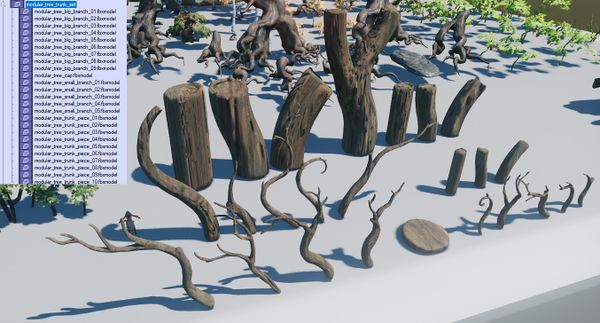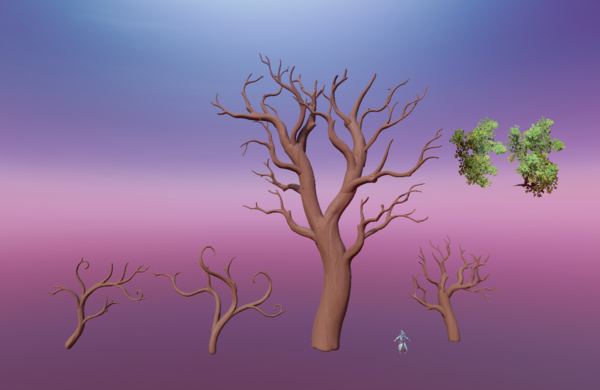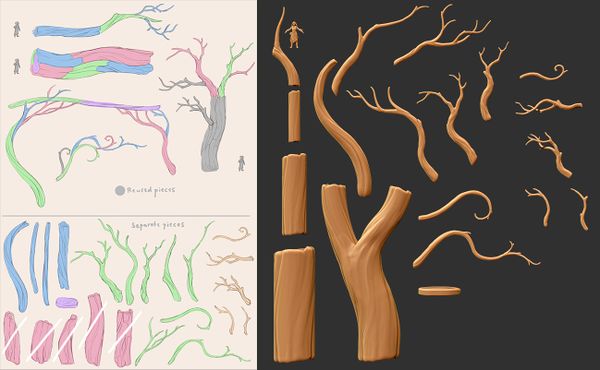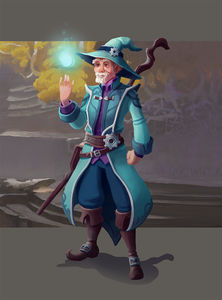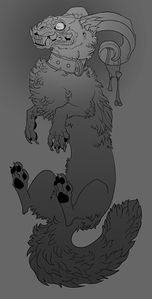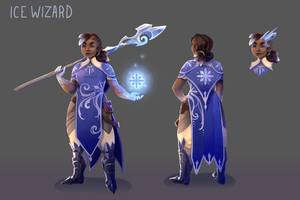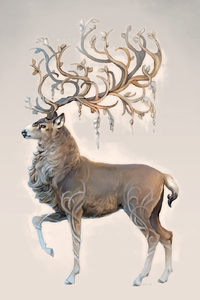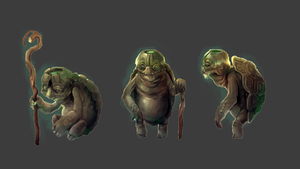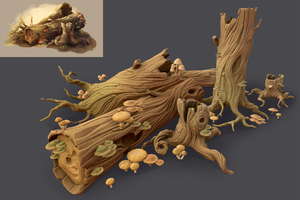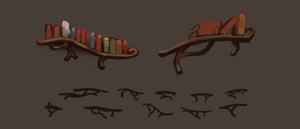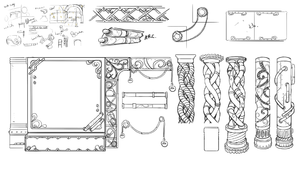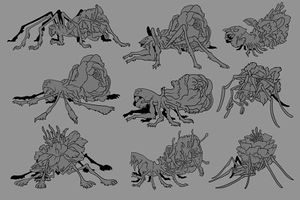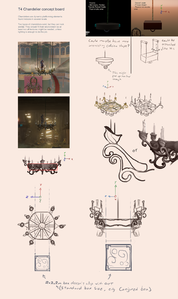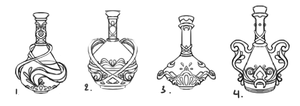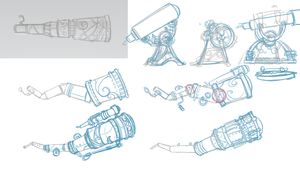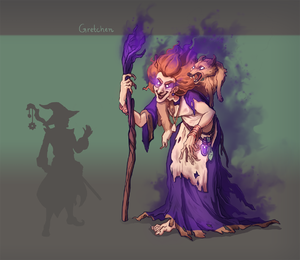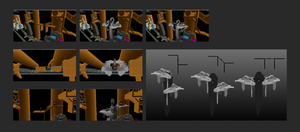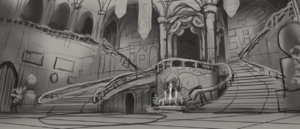3D Asset Workflow: Concepting
Revision as of 09:12, 6 August 2021 by Mio Mäkijärvi (talk | contribs) (→Frozenbyte concept art examples)
- Next workflow phase 3D Asset Workflow: Sculpting
- This site is a part of a series of 3D asset creating process related wiki sites 3D Asset Workflow
Contents
The Concept Process
General
- There can be two starting points for a 3D asset concept:
- No existing concepts, or
- One/several concepts already exist
- In both cases, the 3D artist should make their own concept, when they start to work with the asset
- The concept can be very directional and not rendered at all, because that's not the end product, the 3D asset is
- The point of this is to have a very clear idea of what you will be doing, and to polish the possible existing concepts before starting the actual model
The Goal for the 3D Assets
- The 1st goal is to achieve as good looking asset as possible - there can be several paths to this, and it might take some trial and error to get there, which is normal
- The 2nd goal is to allow some room to the 3D artist's creativity, but within certain boundaries based on the big picture defined by concept artist's concept
- This actually supports the 1st goal, as creative freedom for the 3D artist can mean more and better ideas for the asset!
- The goal is not to make a barely good enough asset as fast as possible and move on, but really try to come up with the nicest looking asset - even if it takes some back and forth testing, and more feedback and overpaints
How To Make a Concept for a 3D Asset
- RESEARCH
- If there aren't any existing plans or concepts for the asset, discuss at least with the leads/AD, and possibly also with the designers and the the writer, about what is wanted, and research any materials related
- If there are concepts made by the concept artist, use them as a starting point, but try to add your own ideas to improve the general idea, if possible
- Please read all the texts and descriptions related to the asset, and check the level/environment it's supposed to be used in, if that exists already
- When exploring the context, pay attention to how the general shape language is in the level the asset will be used in. Are the forms for example curvy, straight, round, sharp, angular, thick, thin, horizontal, vertical? How are e.g. the decorative details on different concepts? If there is an established style for e.g. the decoration flourish curves, that is repeated around different concepts, pay attention to that style, and try to capture it in your asset as well
- Depending on the stage of the project, there might already be the actual level and/or some assets that are made for that same level. Observe those to make sure your asset will match them, when used side by side
- Think about the story of the asset - is it old or young/new, what is the nature of the asset, the environment it will be used in etc. What's the history of the asset? How does all this affect to the look of the asset? Read all the possible other related background information about the asset
- For example, in the Trine style, everything should be more or less worn/mossy/crooked, to create the organic feeling. Generally nothing should be perfectly straight and symmetrical
- Search for reference images online (Pinterest is a good option)
- Analyze the reference images, combine ideas, and come up with a general idea for the asset
- Pick images that have any nice usable ideas that you like. They don’t have to be perfect, and often aren't. That's where the concept art steps in!
- CONCEPT
- Make your own 2D or 3D concept(s) with the above mentioned material as you guide
- At any point, you can ask for opinions and feedback, but at the very latest, once you have the concepts and you are ready to start working on the actual sculpt, it's time to ask for feedback from the leads
- Once you have a good idea of the level and how the general style for that level looks like, you can start thinking the asset. You can now use the possible concepts related to your asset as a starting point, and also concepts that aren't exactly your asset, but might help keeping the general style of the level in mind. It's definitely recommended to also search for some reference images at this point, to get more good ideas for your asset
- Use the best ideas from the possible concepts, your reference images and your imagination, never copy stuff 1:1, but shape it to work with your unique asset!
- Concentrate on the big forms, silhouette, proportions and the overall design
- Keep the detail level and distribution in balance: have small, medium and large detail, and make sure it's not repetitive.
- Fundamentals of Composition very clearly and shortly explained
- Think about the colors of the asset too. Remember the importance of the values - if it's hard to read in true black & white, it'll be hard to read in color, too
- A good concept will make sculpting and texturing easier, and also let the AD and the team know what you are up to
- 3D asset concept art is not marketing art, so don't use time to make a pretty finished image. It’s just a plan and a guide for the sculpting process, and to share the idea with the AD before using a lot of time to make the final asset
- At this point, if the concepts seems good to the AD, you can start working, or then there can be some feedback and modifying rounds
- The details can be further specified during the sculpting process - use reference images for this part of the process as well
The Concept Artist's Role in the 3D Asset Workflow
Here you can find some answers for this question: Why do we have a separate concept artist, but the 3D artists still need to make concepts?
- Concept artist makes concepts with the big picture of the level and the whole game in mind. As the focus is on the big picture, the concept artist can leave some details out on purpos,e to not use too much time thinking about them, as that's not the main job of the concept artist in our projects
- Sometimes the concept artist's concepts are more vague and sometimes they have more details, but in both cases the 3D artist should make their own more detailed concept (2D drawing or a rough quick sculpt), where they really think about that specific asset more deeply - something the concept artist usually haven't got time to do
- In many cases, the 3D artist might come up with something better than the original concept, but it's not always even necessary, and the concept artist's concept might already be so finalized it's best just to use it pretty closely. These always depend on the case
- The AD wants to offer the chance for the 3D artist to evolve the asset idea further, and add their own touch to it, but in some cases if it doesn't seem to go in the direction the AD wishes, it's possible to also return to the original concept
- At any point of the process, the 3D artist can request feedback from the leads. Then the AD can offer written or visual (overpaint) feedback, to guide the asset to a more suitable direction. Usually the AD first offers written feedback, to give more freedom to the 3D artist to modify the work, but if this doesn't seem to be clear enough, then the AD can make an overpaint. The overpaint should be safe to follow, but there might still be some room for 3D artist's own suggestions if they hope to add something. It might end up being OK, or then the AD might ask to just follow the overpaint in the end. This allows more chances for new ideas to surface, so it's worth trying even if it doesn't end up working!
Example of the concept process
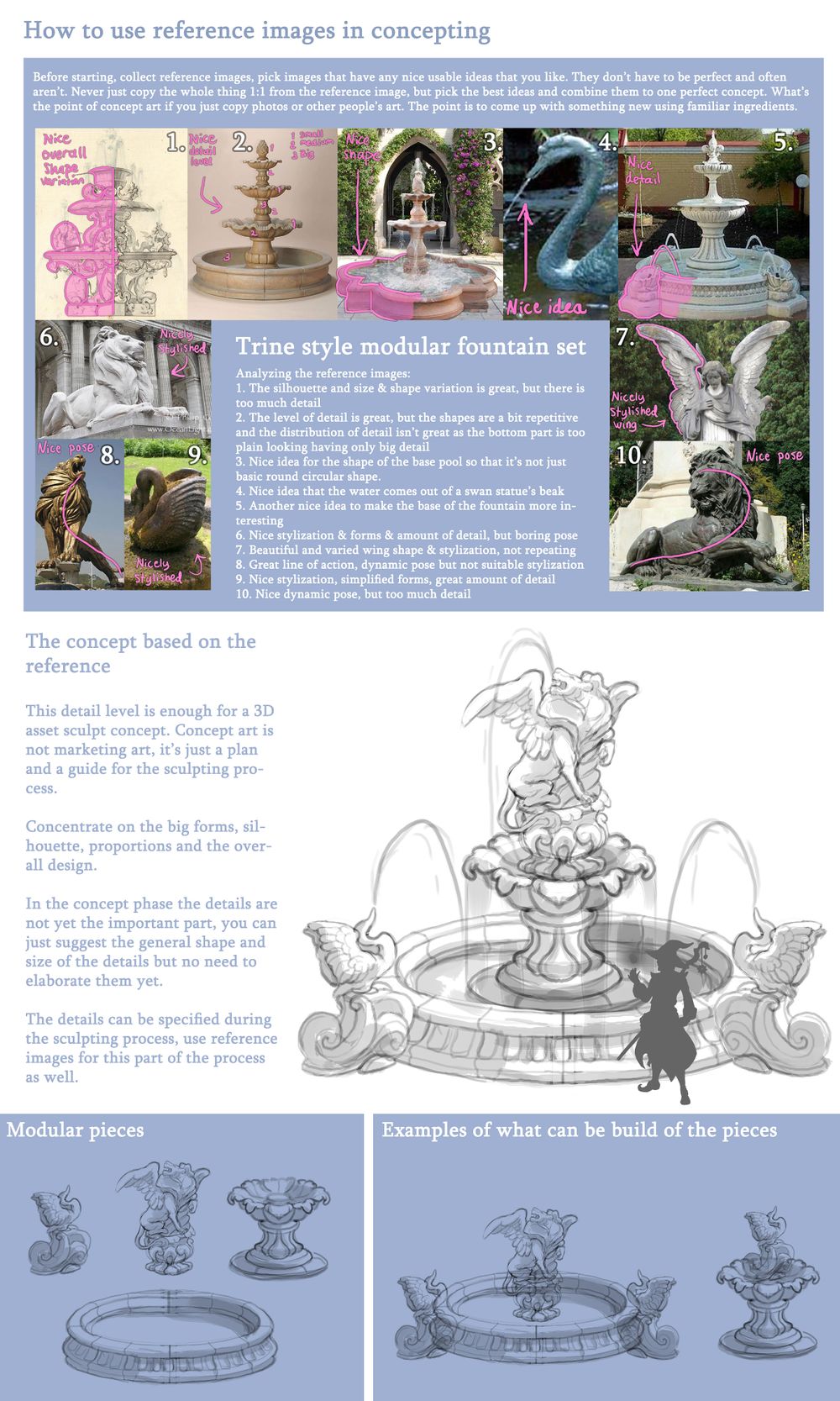
Trine Flourish Curve Style Guide
PHOTO:Multiple Sources
Concepting Example: Modular Tree Set Concept Process
Planning the Separate Assets
- A good way to start planning an assetm is to collect all the information you have and after that is clear, then start concepting. The more complicated and big the asset task is, the more preparation is needed in the planning phase
- Asking if the task is still up to date and have everything relevant in it - the nature of game developing is that plans can change quickly, so tasks can have old information
- Checking the possible wiki site for the level(s) that the asset should be made for
- Checking the possible already existing concepts related to the task
- Checking and gather reference images
- Checking what kind of similar assets already exists in the Editor, so you can avoid making duplicates/very similar assets
- Once you've got all the information you might need, you can start concepting
- First, you can just concept different things you think would be useful
- Once you think you have everything down, you can check if some of the stuff could be recycled between your different models, to again save time
- There is no point in having different models for something that would work as well as just one model in every situation needed
- It can sometimes be hard to decide if two pieces are different enough, but too similar stuff can be eliminated at any time during the asset creating workflow
Making Quick Rough Models for Testing Before Finalizing the Assets
- Sometimes it can be hard for the level artists to say if some assets will be useful or not, and how they could be improved based on only the 2D concept image
- For complicated sets it's a very effective method to first make the planned pieces very quickly and roughly, and let the level artists test them
- Testing the assets before finalizing them can be a lifesaver, as some assets might end up being totally useless
- Here is an example of super rough models that were first made, but decided not to be used as level artists noticed it would be better to have whole tree trunk pieces instead of these smaller pieces
- After level artist testing and feedback, the pieces were scrapped and new ones created, not much time was lost as the pieces were done very quickly
- Once these were tested and confirmed working, the finalized detailed assets could be made
- Also similar test models of the branches were added for the same purpose
- Here are the test pieces and how the level artist tested them
- These ended up being the final pieces needed for the se, and there are more useful and less useless pieces because of the communication and testing with the level artists
Frozenbyte concept art examples
- Concepts can be anything really depending on the situation
- Usually a very crude concept is enough to communicate the idea
- In many cases, the further the design is taken during the concept phase, the easier it'll be in the sculpting phase
- But on the other hand, it can be easier to fully figure out the object in 3D based on just a very vague concept
- It depends on the artist and the asset
- Often with characters, it's good to take the concept quite far and design some details and colors as well
Sources
[PHOTO: How to use reference images in concepting.jpg] - Source list :
- Img. 1 : Pintrest [accessed June 5, 2018] (311) Pinterest. Available at: https://fi.pinterest.com/pin/557883472571184162/
- Img. 2 : outdoorartPROS [accessed June 5, 2018] Garda Three Tier Pond Fountain. Available at: https://www.outdoorartpros.com/collections/tiered-outdoor-fountains/products/garda-three-tier-pond-fountain
- Img. 3 : Lushome [accessed June 6, 2018] Water Fountains, Front Yard and Backyard Designs. Available at: http://www.lushome.com/water-fountains-front-yard-backyard-designs/52334
- Img. 4 : SpecialtyFountains [accessed June 5, 2018] Bronze Fountain Statuary. Available at: http://www.specialtyfountains.com/bronze_fountains.html
- Img. 5 : FFBarbecues [accessed June 6, 2018] FONTAINES POUR JARDIN ROMANA – FFBarbecues. Available at: https://www.ffbarbecues.com/produit/fontaines-pour-jardin-romana/
- Img. 6 : Natural History Photography [accessed June 6, 2018] Nyc Public Library Photo, Stock Photo of NYC Public Library, Phillip Colla Natural History Photography. Available at: http://www.oceanlight.com/spotlight.php?img=11155
- Img. 7 : Flickr [accessed June 5, 2018] Robed angel looking down | Monceau | Flickr. Available at: https://www.flickr.com/photos/monceau/6291672868
- Img. 8 :China Daily Europe [accessed June 6, 2018] Giant lion sculpture. Available at: http://www.chinadaily.com.cn/china/2007-05/08/content_868100.htm
- Img. 9 : Geograph[accessed June 5, 2018] Swan fountain, Darignton. Available at: http://www.geograph.org.uk/photo/1401554
- Img. 10 : Palermo e dintorni ma anche… [accessed June 5, 2018] Palermo e dintorni ma anche...: maggio 2009. Available at: http://palermodintorni.blogspot.com/2009/05/
